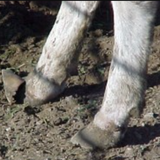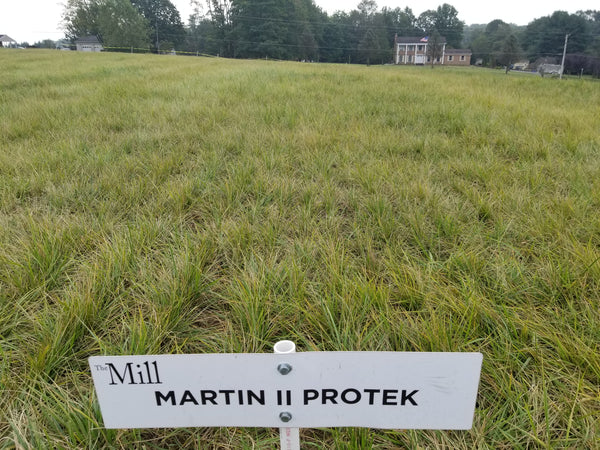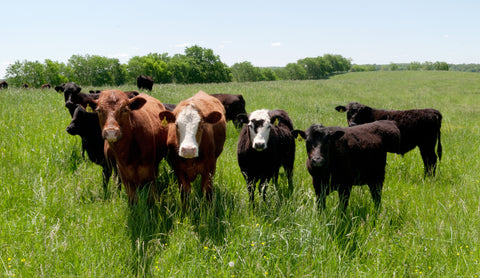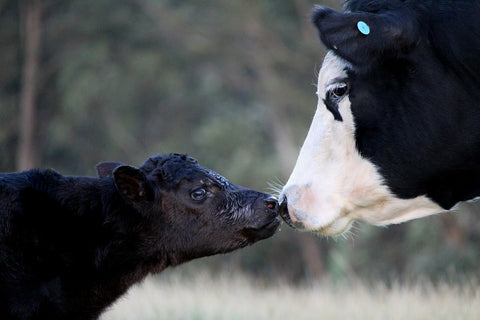Growing and feeding quality forages will improve health and profitability by reducing out-of-pocket expenses. Grazing systems in the Mid-Atlantic area utilize cool-season grasses. Fescue is a resilient cool-season perennial grass that is growing in popularity as a forage for grazing or hay since the development of novel endophyte fescue varieties to mitigate potential health risks.
There are many varieties of fescue. Some are turf-type tall or fine fescues designed for lawns and others are developed for forage production. All fescue varieties thrive in temperate regions, are easy to establish, have strong root systems, have disease resistance, and are persistent for many years.
The History of Fescue Development:
Fescue for grazing became popular by the mid-1950s with the commercialization of Kentucky 31 fescue discovered on a Kentucky farm in the 1930s. Most grazing land in the US is comprised of this variety also known as K31. Fescue has developed a bad reputation for grazing in decades past due to health  problems resulting from a fungal endophyte. While the endophyte improves plant hardiness, the ergot alkaloids can cause toxicosis resulting in reproductive and soundness issues, especially in cattle and horses. Fescue foot is a syndrome that is not uncommon when high levels of alkaloids are present. Cattle and horses can also experience spontaneous abortion in early pregnancy when grazing pastures with high alkaloids. The alkaloids constrict blood vessels to the point of interrupting blood flow to tissue. The extremities are usually affected such as the feet, ears or tails. When
problems resulting from a fungal endophyte. While the endophyte improves plant hardiness, the ergot alkaloids can cause toxicosis resulting in reproductive and soundness issues, especially in cattle and horses. Fescue foot is a syndrome that is not uncommon when high levels of alkaloids are present. Cattle and horses can also experience spontaneous abortion in early pregnancy when grazing pastures with high alkaloids. The alkaloids constrict blood vessels to the point of interrupting blood flow to tissue. The extremities are usually affected such as the feet, ears or tails. When  cells don’t have adequate blood flow, they die. Lameness may be temporary due to soft tissue contraction or permanent with tissue death or bone rotation such as in laminitis. Tissue may become necrotic and slough off in severe cases. Early symptoms include grazing animals spending extra time lying down, standing on soft ground or in water, lameness and rough hair coats.
cells don’t have adequate blood flow, they die. Lameness may be temporary due to soft tissue contraction or permanent with tissue death or bone rotation such as in laminitis. Tissue may become necrotic and slough off in severe cases. Early symptoms include grazing animals spending extra time lying down, standing on soft ground or in water, lameness and rough hair coats.
Improving Plant Genetics:
Since the turn of the century plant geneticists have developed forage fescue varieties that are highly productive and more palatable than K31. Trying to eradicate the toxic condition that plagued horses and cattle under certain conditions, endophyte-free fescues were developed. They initially did well, however, without the endophyte, they did not have the hardiness and persistence over many grazing seasons that K31 had. Geneticists continued working on improved varieties to maintain the desired traits of persistence and resistance while eliminating the toxic endophyte. The newest varieties developed in the last decade are available as ‘Novel Endophyte Fescues”. These varieties do have endophytes, however, they are not the toxic, alkaloid-producing endophyte type. These safe fescues have been proven to persist and thrive while producing abundant yields of quality forage that is palatable.
Today fescue offers a robust forage option in pasture mixes to improve the agronomic value while minimizing the risk of toxicosis in grazing animals. Whether utilized for grazing or hay production, fescue can meet the dietary needs of diverse livestock species while providing tonnage per acre that rivals or beats other forage species, is palatable and is hardy enough to withstand grazing pressure, diseases, and droughts better than other forage species.
The Mill’s Preferred Fescue Varieties:
In 2018, The Mill planted a novel fescue called Martin 2 Protek at a trial plot in White Hall, MD. This variety has been a top performer in the plot and is still looking and yielding great. It had a terrific nutritional profile when it was tested and ranked high in the 15 variety plot. In 2021 Tower Protek Tall Fescue was added to our trial forage plot. It contains the same non-toxic endophyte as Martin 2 Protek and is a softer-leaved fescue.

Pasture Management with Tall Fescue:
Effective grazing management is key to maximizing the benefits of any pasture species including fescue. Rotational grazing, where animals are moved between paddocks to allow forage regrowth, helps maintain pasture health and productivity. Fertilizing fast-growing cool-season grasses provides rapid regrowth and reduces drought stress in the summertime, allowing for more forage quality and tonnage before summer dormancy sets in.
Tall fescue is particularly noteworthy for its high yield potential and nutritional value, making it a staple in pasture systems for cattle, horses, and other stock. Whether utilized for grazing or hay production, fescue can meet the dietary needs of diverse livestock species while providing tonnage per acre that rivals or beats other forage varieties, is palatable and is hardy enough to withstand grazing pressure, diseases and droughts better than other forage species. Beyond its benefits for livestock, grazing fescue can have positive environmental impacts, including soil conservation, water infiltration and carbon sequestration due to deep root systems. Additionally, well-managed fescue pastures contribute to sustainability, making them valuable for farms and the broader community.










